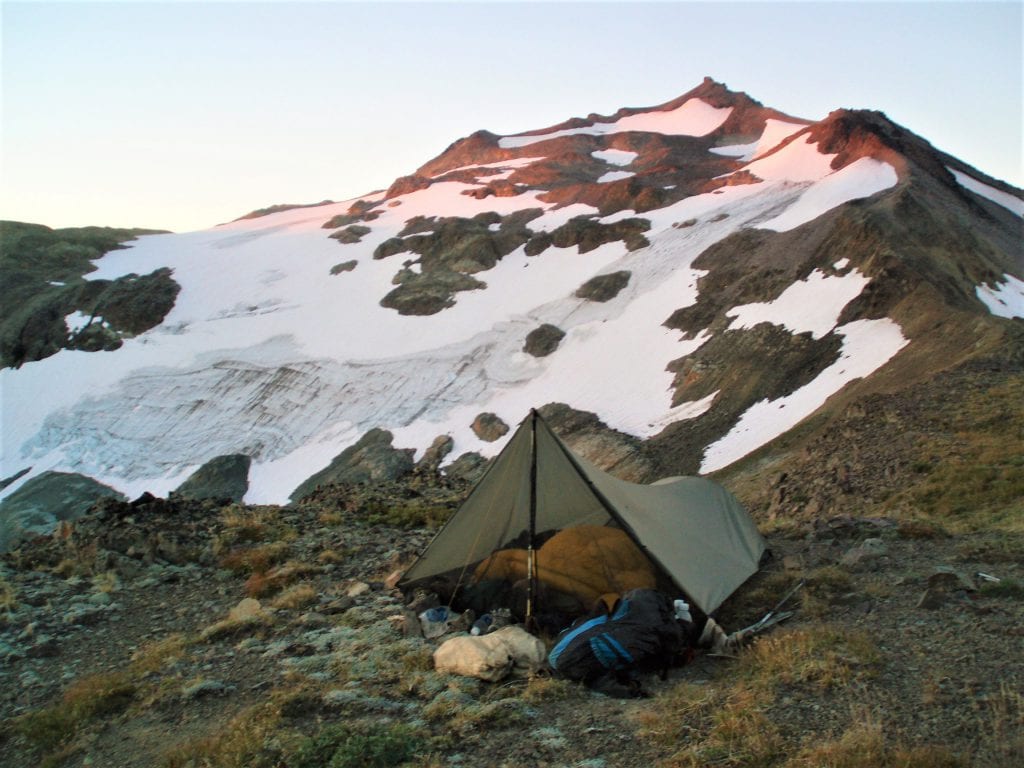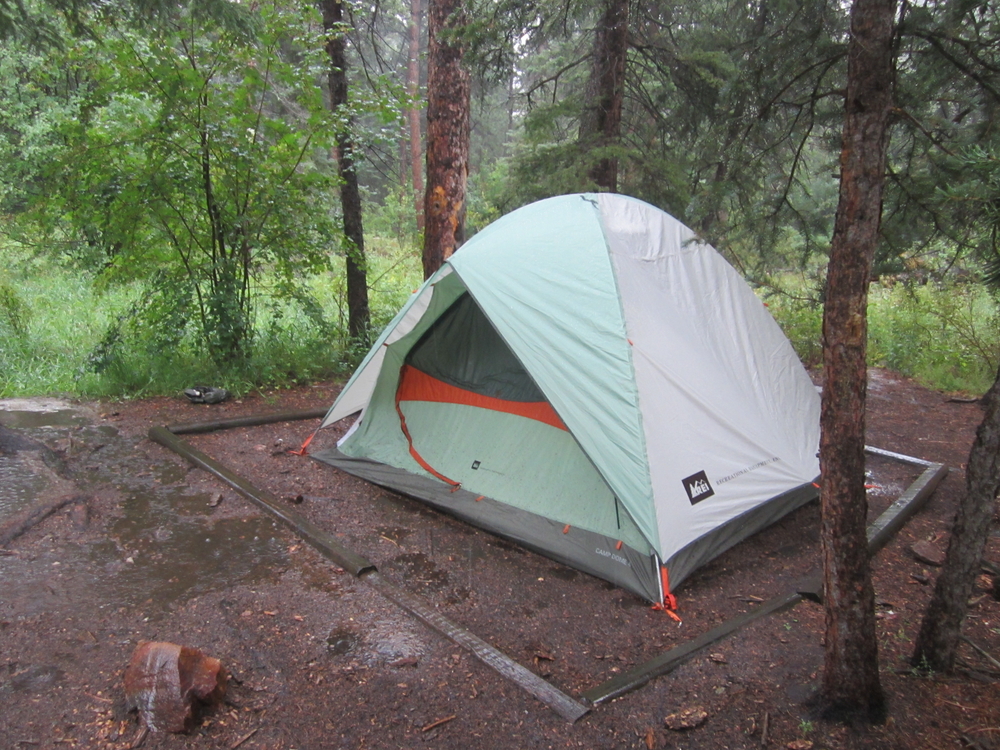Selecting a good campsite can make or break your camping trip. Flooded tents, falling trees, and noisy neighbors can spoil a trip, but can be avoided with some preparation and planning. Whether you’re glamping in an RV, pitching a tent, or cowboy camping under the stars, there are some things to consider when selecting a good campsite.

1. Look for Level Ground
While this may not be important for folks in a hammock, everyone else is going to want to find an area that is mostly level to set their shelter. If you can’t find a spot that is perfectly level, start to think about how you’d like to sleep while sloping. For some, after a long day of hiking having feet elevated to allow for any swelling to go down can help. For others (especially if allergies are kicking in), having your head elevated can help with night time stuffiness.
2. Check Your Campsite’s Drainage
If you’re in a vehicle or hammock this may not be as critical, but if you’re in a tent or cowboy camping be sure you pay attention to drainage. Is the surrounding area sloping towards your campsite? If there is precipitation in the middle of the night, the last thing you are going to want to do is get out of your warm, cozy sleeping bag and move your tent because of flooding. This can be tricky if you are on a tent pad. If there is precipitation in the forecast, digging a moat or canal away from your tent can help.
3. Choose Your Door Orientation.
Whatever your shelter type, if you’re in an area near other campers it makes sense to pay attention to the direction your doors face. When we are tent camping with just the kids, we usually have our tent door face the kids’ tent door, so we can check in on them and see what they’re up to. When we are in our campervan in a dispersed campsite where there’s other campers, we try to have our campervan door face away from their campsite, or use the shelter of a tree for privacy. This allows the kids get in and out to use the bathroom in the middle of the night without having to hide.
4. Make the Most of Sun and Shade
During the shoulder seasons, we usually pay attention to where the sun will rise and try to orient out tent to get hit by the sun as early as possible to help warm us up in the morning. In the height of summer, we look for more trees and rock outcroppings that will provide shade and shadows earlier from the sun setting.

5. Check Your Proximity High Traffic Areas
Especially in established campgrounds, be aware of the location of high-traffic areas, such as bathrooms and water sites. The last thing you want is to hear the door to the bathrooms opening and closing all night long.
6. Fun things For Kids to Do at the Campsite
Be sure to choose a campsite that has direct access for fun features such as rocks, trees, and creeks. Many established campsites have photos or reviews online that can help guide you., Or, look at the sites’ maps to see if there is any water flowing nearby that could be an added bonus to your stay.
7. Check for Unhealthy Trees
Pay close attention to the health of trees around the site. We learned this during a backpacking trip to Yellowstone. As we were setting up our tents in a grove of trees during a huge windstorm, three of the trees crashed down as we were driving in the final stakes. We pulled up all the stakes and relocated away from the dead trees! Also, for my hammock lovers out there. You’ll want healthy trees, or something else that’s sturdy, to hang your hammock from.

8. Watch for Sharp Objects
Clear sharp debris (rocks, pinecones, etc.) from under your tent footprint prior to setting up your tent to decrease the chance for discomfort or punctures of sleep pads.
9. Remember the 200 Foot Rule for Campsites
If you’re at a dispersed site (not an established campground), be sure to follow the 200 foot rules. Set up camp more than 200 feet away from the water’s edge (lakes, ponds, rivers, etc.) to prevent any ecological impacts on the area), as well as 200 feet from any trail to prevent hikers from wandering into your campsite at night. It’s also a good rule of thumb to have your tent 200 feet from where you do your dishes, use the toilet, and store your food.

10. Remember to Leave No Trace
Minimize your impact and leave no trace to protect the outdoors. Choose an existing camp location whenever possible, and at the minimum camp on a durable surface instead of fragile areas. Don’t forget to clean up your trash, don’t cut the vegetation, and leave what you find. If you aren’t familiar with all the Leave No Trace Seven Principles, check them out here before you head out.
These 10 tips should help you pick a good campsite to call home in the great outdoors. Also remember to always follow the advice of the local rangers and area experts on wildlife precautions. Get out there and have fun!